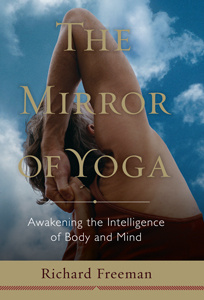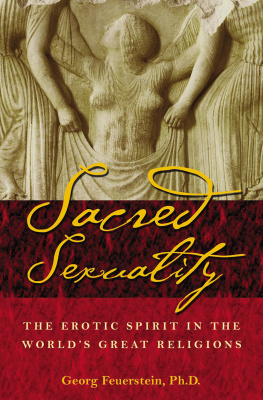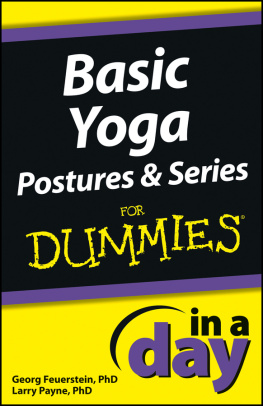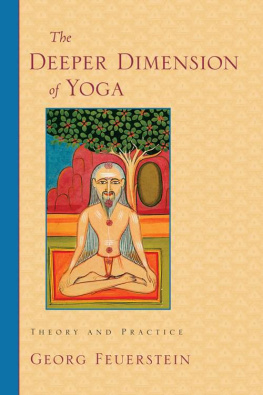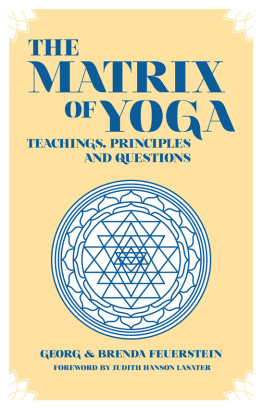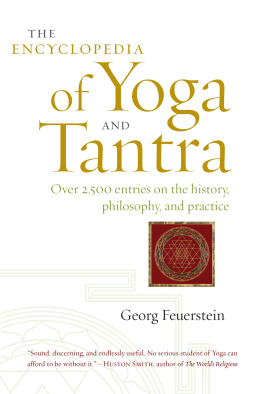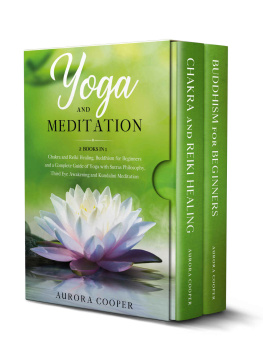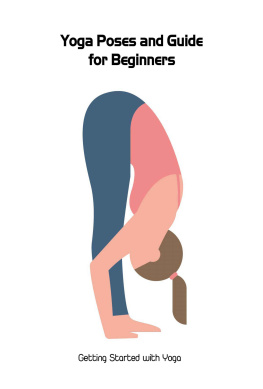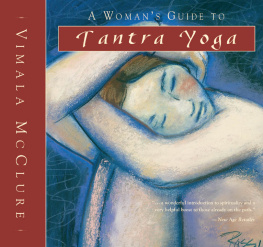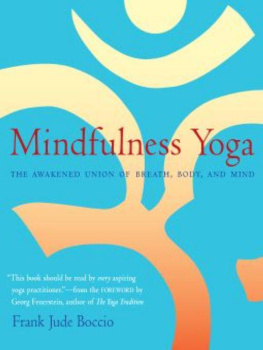Whether you are a student of yoga or would like to become more familiar with this ancient Indian tradition, you will find this an easy-to-read guidebook that is based on authentic writings and experiences of some of Indias great yogis.
Booklist
Certainly a staple of any well-rounded yoga collection.
Library Journal
Feuersteins guide is an important pointer in the right direction that should also help readers understand the astonishingly sophisticated system that has emerged from a 5,000-year-old Indian spiritual tradition.
Publishers Weekly
This is a classic book for every Yoga enthusiast, whether neophyte or seasoned practitioner.
Sarah Powers, author of Insight Yoga
If youre looking for a comprehensive yet very readable introduction to the important schools and practices of the Yoga tradition, look no further. A master work by a master scholar-practitioner, this is the only book I ever recommend to students wanting to lay a historical and philosophical foundation as they begin the serious study of Yoga.
Richard Rosen, author of The Yoga of Breath
This is an excellent little introduction to some of the practices and theologies of Yoga, with particular emphasis on the Tantra traditions, which, although not mainstream in Hinduism, have recently become popular in the West. Feuerstein is taken seriously by both academics and yogis, and authoritatively combines the qualities of scholarship with the sensitivities of a practitioner. I always learn much from his writings.
Edwin Bryant, professor of Hindu Religion and Philosophy, Rutgers University
ABOUT THE BOOK
This overview of the essentials of Yoga is meant to both broaden and deepen the understanding of beginning students. It covers all the basic elements of this ancient discipline and philosophy of Indiaincluding Yoga poses, diet, breath control, meditation, mantras, Kundalini energy, and more. It also includes newly translated excerpts from the scriptures and pays special attention to branches of Yoga, such as Tantra, that are of great interest to Western students but are frequently misunderstood.
GEORG FEUERSTEIN, Ph.D., is internationally respected for his work on Yoga and is the author of over fifty books. He has designed and taught several distance-learning courses on Yoga philosophy for Traditional Yoga Studies. For more information, go to www.traditionalyogastudies.com.
Sign up to learn more about our books and receive special offers from Shambhala Publications.

Or visit us online to sign up at shambhala.com/eshambhala.
THE
PATH OF
YOGA
An Essential Guide to Its
Principles and Practices
Georg Feuerstein

SHAMBHALA
Boston & London
2011
Shambhala Publications, Inc.
Horticultural Hall
300 Massachusetts Avenue
Boston, Massachusetts 02115
www.shambhala.com
1996, 2011 by Georg Feuerstein
This book was previously published under the title The Shambhala Guide to Yoga.
Drawings in chapter 5 by Vicky MacDonald
All rights reserved. No part of this book may be reproduced in any form or by any means, electronic or mechanical, including photocopying, recording, or by any information storage and retrieval system, without permission in writing from the publisher.
Library of Congress Cataloging-in-Publication Data
Feuerstein, Georg, 1947
The Path of Yoga: An Essential Guide to Its Principles and Practices / Georg Feuerstein.
pages cm
Includes bibliographical references and index.
eISBN 978-0-8348-2292-4
ISBN 978-1-59030-883-7 1. Yoga. I. Title.
BL1238.52.F48 2011
181.45dc22
2010042919
When Shambhala Publications told me that they were preparing a new edition of this book, now titled The Path of Yoga, I was glad to avail myself of the opportunity to amend and improve the text. In particular, I have made brief comments at the end of certain chapters to update the reader on my relevant current thinking. Since the publication of the first edition of The Shambhala Guide to Yoga over ten years ago, I have authored many new books, but the present work remains one of my favorites. It serves, I feel, very well its original purpose as an essential guide to Yoga.
Those wishing to delve deeper into what I consider the worlds most versatile and satisfying spiritual tradition might want to consult Yoga: The Deeper Dimension, also published by Shambhala. For a truly comprehensive overview of Yogas philosophy, history, and literature, my book The Yoga Tradition (Hohm Press, 2008) will satisfy even the most knowledge-thirsty reader. If yet more detail is sought, I have put together an 800-hour distance-learning course comprising nearly a thousand printed pages. Numerous students from around the world have taken this course, which is available through www.traditionalyogastudies.com.
For further study, I can also heartily recommend my book Yoga Morality (Hohm Press, 2007) which applies the moral disciplines of Yoga to our contemporary world with its copious social, political, and environmental problems.
But for now, I hope that the present publication will help launch you on a journey of discovery that can genuinely bring you wisdom, direction, and joy.
Georg Feuerstein
The sage yoked in Yoga soon attains the Absolute (brahman).
BHAGAVAD-GITA V.6
I have been studying the Yoga tradition since the early 1960s, and I continue to be awed by its enormous wealth of experience and understanding of the human condition. My own life has been deeply, lastingly, and benignly affected by the combined wisdom of the great teachers of Yoga, past and present. I have also seen the beneficial influence of Yoga practice in the lives of many others. I believe that this ancient and vast tradition is as relevant today as it was thousands of years ago, possibly more so.
All my various books on Yoga and other aspects of Indian spirituality have served one purpose: to make the genuine traditions available and accessible to those who are dissatisfied with watered-down Western derivatives and who wish to become informed about the authentic original teachings. The present book, too, is in alignment with this overall purpose of my lifes work, which was first conceived and articulated in my late teens.
Each of my books is an attempt to offer yet another perspective on Indias spiritual traditions. In the present book, I am providing an overview of the essentials of Yogaunderstood not as a system of calisthenics but as a full-fledged spiritual traditionthat can both broaden and deepen the understanding of beginning students as well as serve as a compass for more advanced practitioners. I have singled out Classical Yoga and Tantra-Yoga (including Hatha-Yoga) for more detailed discussion, because these two branches of the Yoga tradition are of the greatest interest to Western students but are still often badly misunderstood.
I am very grateful to Samuel Bercholz and the editorial team of Shambhala Publications for inviting me to write this guide to Yoga. Working on this book gave me the opportunity to delve again into my favorite Sanskrit scriptures and to listen to the clarifying and inspiring thoughts of masters like Yajnavalkya, Patanjali, Vyasa, Gaudapada, Shankara, Ashtavakra, Gheranda, Svatmarama Yogindra, Swami Vivekananda, Sri Aurobindo, Swami Sivananda, Ramana Maharshi, Swami Nikhilananda, Swami Muktananda, and Nisargadatta Maharaj. I have quoted them whenever possible.
May this book bring understanding (
Next page
